Tashi Delek! One often hears this auspicious Tibetan greeting in Xizang and even in places that have been influenced by it, such as Bhutan and Nepal. An integral part of Tibetan culture, it reflects warmth, hospitality, goodwill, and harmony and is applicable to everyone – locals and visitors alike.
The 5th China Xizang Internet Photography & Video Festival – an annual multimedia exhibition covering the vast and mystical southwestern Chinese autonomous region of Xizang and the development that it has been experiencing in recent years – recently concluded, and an awards ceremony was held in Lhasa on July 25, as well as a showcase of entries from the photography category.
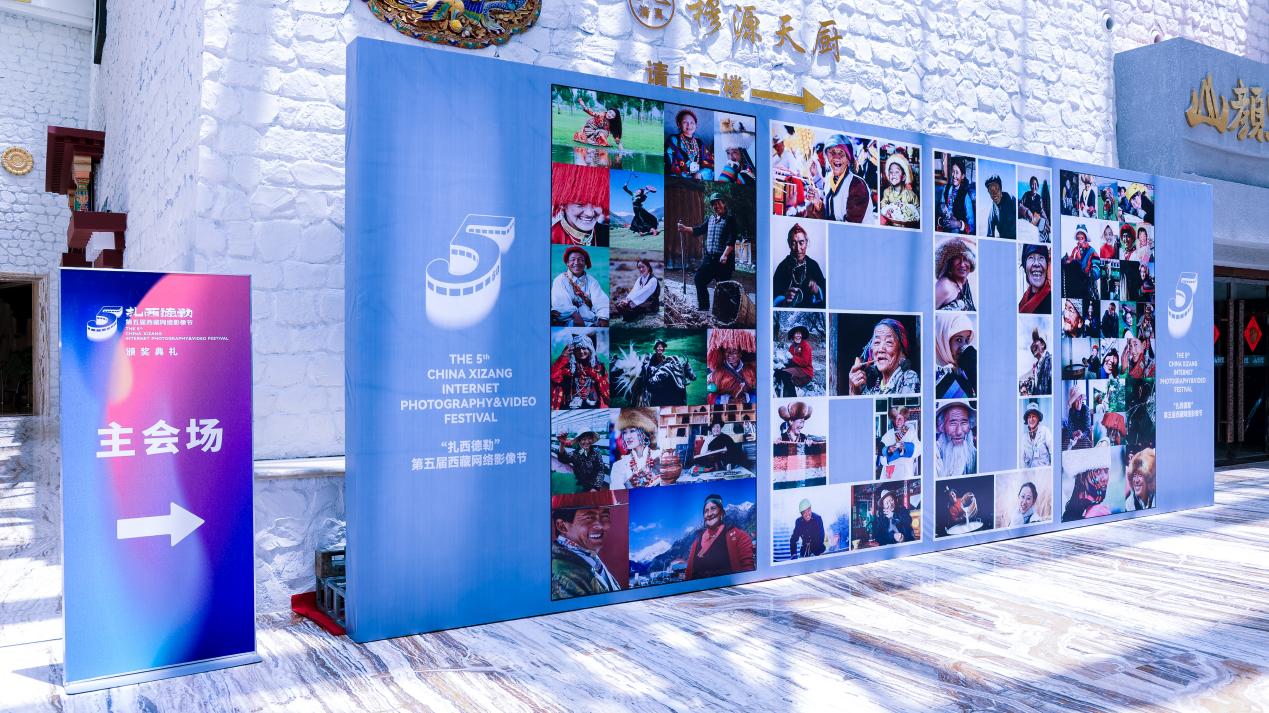
A sign points to the hall where the 5th China Xizang Internet Photography & Video Festival awards ceremony is held at the InterContinental Lhasa Paradise hotel in Xizang Autonomous Region on Friday, July 25, 2025.
The festival was hosted by the Xizang Regional Cyberspace Administration and organized by the China Internet Information Center (CIIC). An employee of the CIIC working with the China Development Gateway in partnership with the World Bank, I participated and attended with a team of members from various parts of China as well as Spain and the U.S.
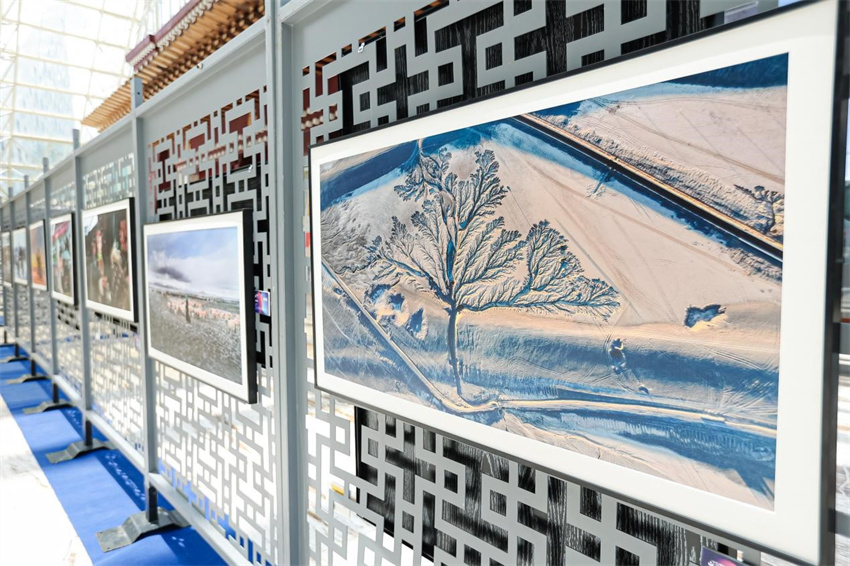
Entries from the photography category of the 5th China Xizang Internet Photography & Video Festival are displayed at a special exhibition at the InterContinental Lhasa Paradise hotel on Friday, July 25, 2025.
A fan of photography, media in general, and Xizang, I was glad to return to the region and be involved. I have been fascinated by Xizang, a mysterious land full of longstanding history, rich culture, and sublime geography, ever since I was a kid and have traveled there multiple times as an adult. I have been able to visit the city of Lhasa, which seamlessly blends ancient tradition with modern infrastructure and development; the majestic Potala Palace, a UNESCO World Heritage Site museum full of glittering history and atmosphere; the city of Xigaze in the southwest; the once-in-a-lifetime Mt. Qomolangma Base Camp, and other captivating locations.
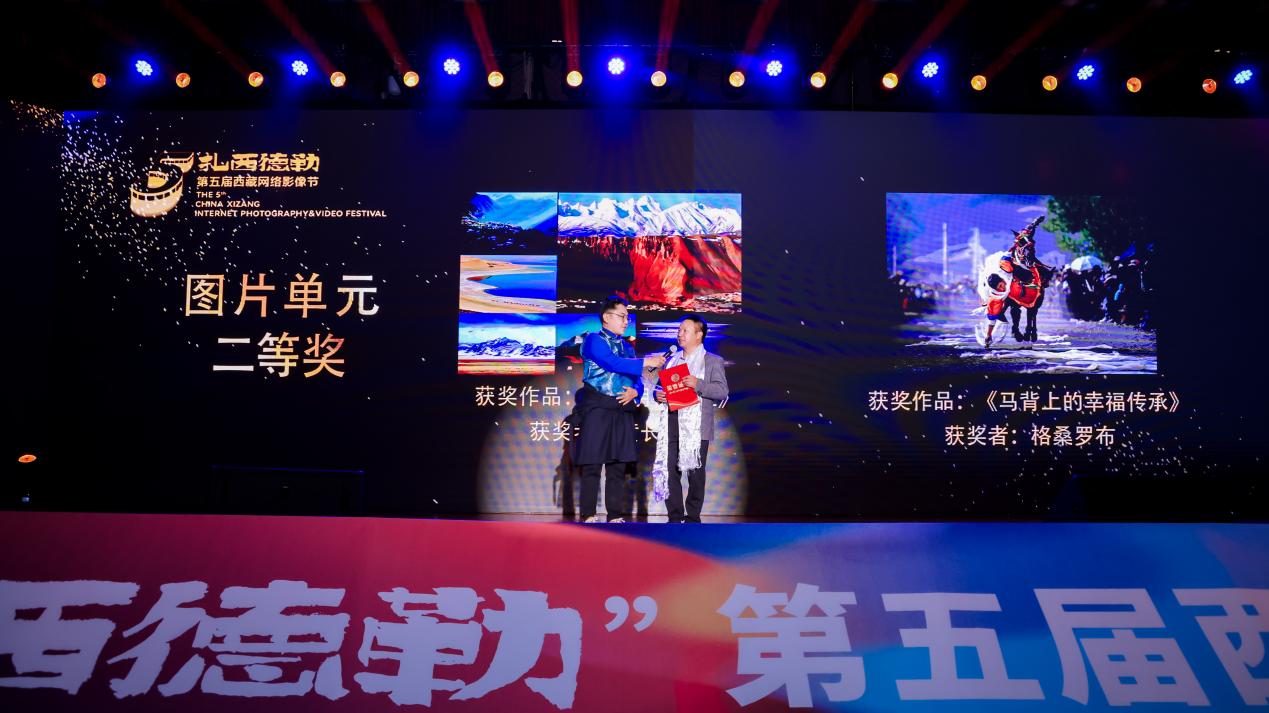
A 5th China Xizang Internet Photography & Video Festival award-winner shares his story at the corresponding awards ceremony.
Photographers, videographers, vloggers, musicians, and other creatives began submitting works to the 5th China Xizang Internet Photography & Video Festival in four categories in September 2024 – still photography, micro-movies, short videos (including animation) and songs. An impressive 140,000-plus works were submitted by contributors from China and around the world and underwent four rounds of rigorous review and shortlisting, with 108 ultimately receiving awards. A first prize, two second prizes, and three third prizes were awarded in each category as well as awards recognizing participation and popularity.

Visitors take photos of some of the 5th China Xizang Internet Photography & Video Festival entries at a special exhibition covering the photography category.
Three field sites embody vitalization and prosperity
Our team also traveled to the city of Nyingchi in the southeast part of Xizang and visited three rural field sites that reflect successful sustainable development – two thriving villages and a large and innovative farm – in addition to being involved with the 5th China Xizang Internet Photography & Video Festival. It was nice to learn more about the endeavors that are underway and see how they have helped boost incomes and improve lifestyles and experience the unique beauty and culture in these areas.
Cuogao village epitomizes both traditional agrestic life and contemporary rural vitalization in Xizang
We first visited Cuogao village, a traditional Tibetan village in Cuogao township, Gongbo’gyamda county, that has been recognized for its culture, history, and development at the provincial and national levels in recent years. Home to 444 people who live at an elevation of 3,528 m, the original village and its architecture, which go back hundreds of years, have been maintained and restored; a new village was created in 2018, which has enabled the old village to focus on tourism; and various infrastructure, industry, ecological governance, and development projects have been pursued since.
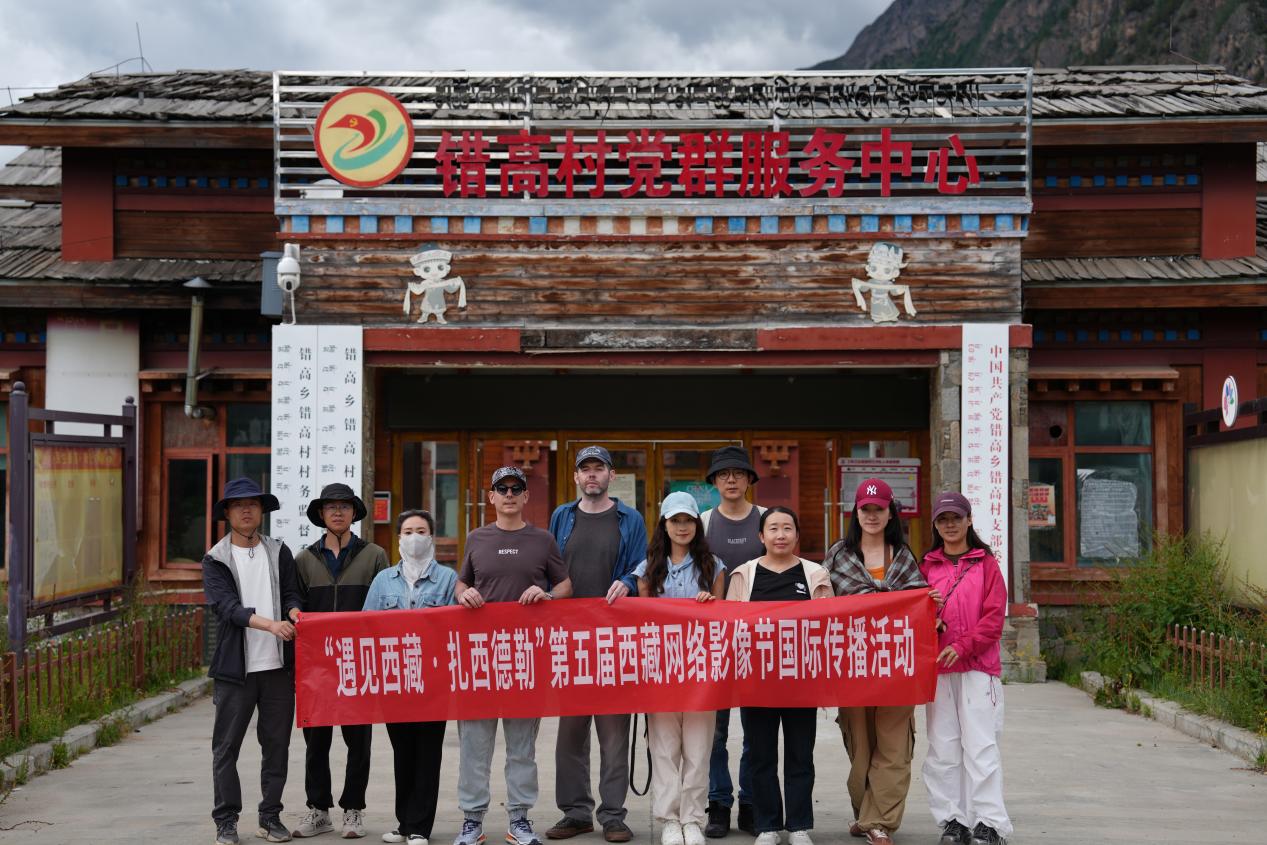
China Internet Information Center (CIIC) staff pose for a photo with locals in Cuogao village, Cuogao township, Gongbo’gyamda county, Nyingchi city, Xizang Autonomous Region.
Crops such as barley, wheat, and rapeseed are grown in the village; thousands of head of yaks, horses, and Tibetan fragrant pigs are raised on local grasslands; cooking oil is produced; and rural tourism facilities are available. The village is also home to a hiking trail, the largest wetlands in Cuogao township, wild understory fungi, a lake that serves as a habitat for birds such as black-necked cranes and wild yellow ducks, the highest alpine mountains in the area, and other interesting features.

A walkway and an exhibition hall in Cuogao village
I enjoyed the combination of rural Tibetan authenticity and natural scenery, and it was nice to see various industries and undertakings growing and developing.
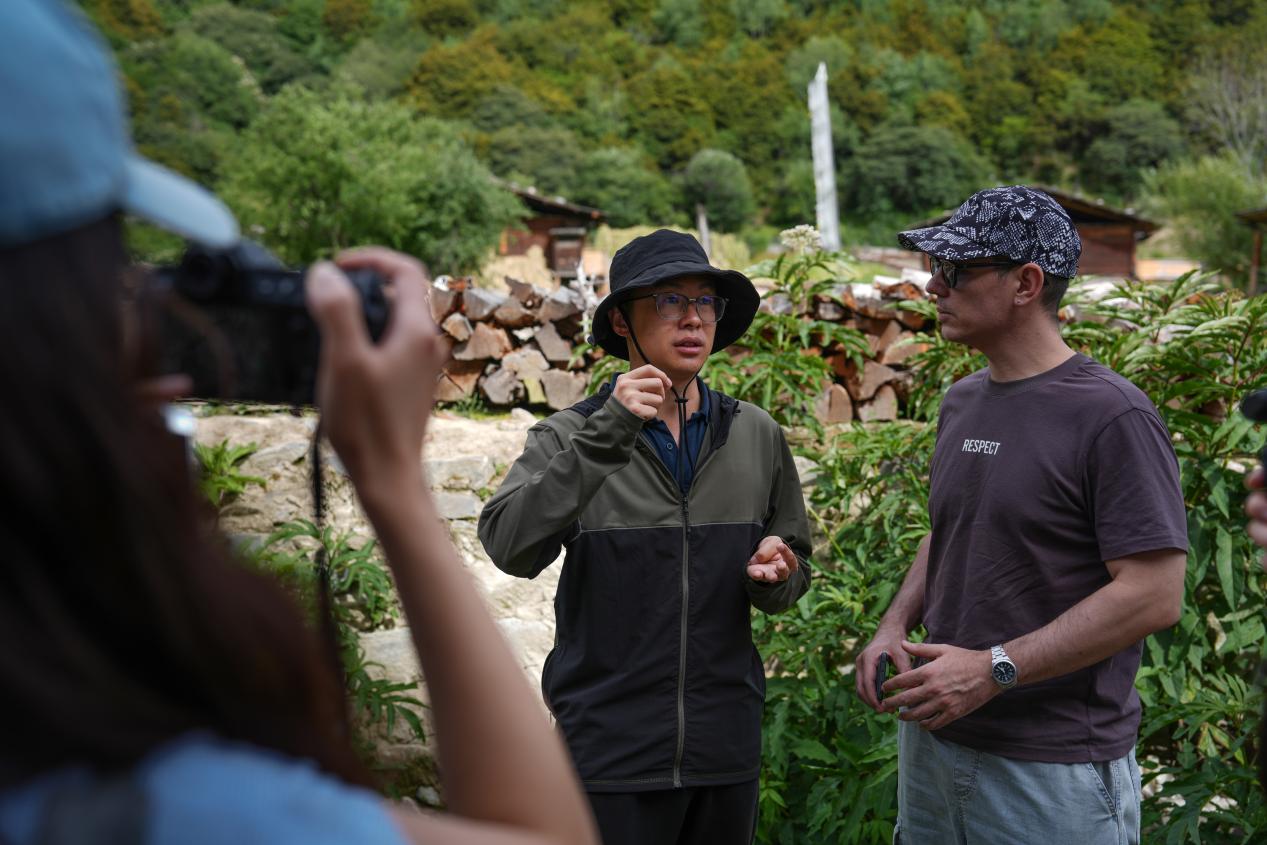
CIIC employee Álvaro Paños (right) speaks with Yu Sen (center), deputy director of the Gongbo’gyamda County Culture and Tourism Bureau, in Cuogao village.
Tourism and fruit farming enable Gala village to blossom like the peaches that are grown there
Next our team visited Gala, a small village of 149 people located in Nyingchi town, Bayi district, that has been vitalized in recent years, mostly via the combination of peach farming and tourism. The host of an annual event known as the Peach Blossom Culture Tourism Festival for 20 consecutive years, it has received strong support from all levels of government.
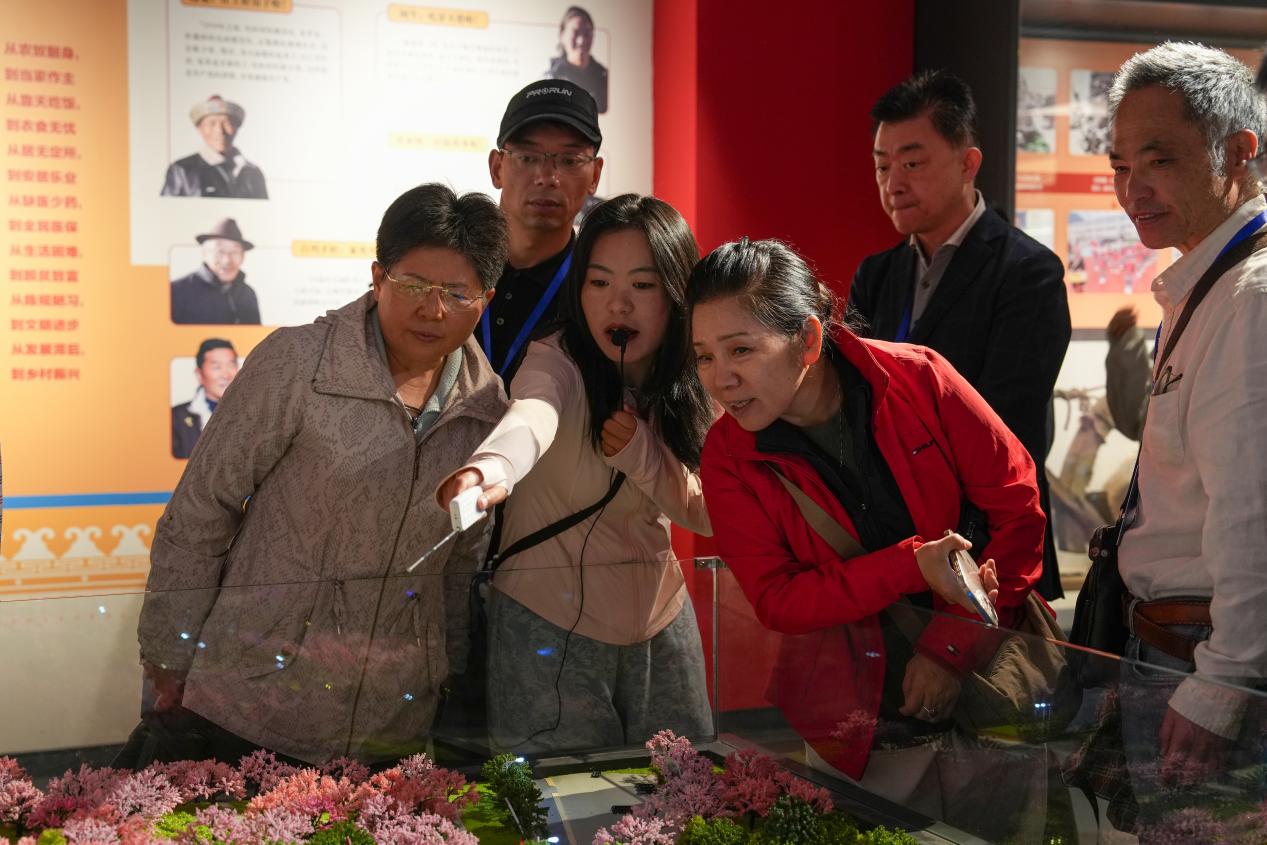
Visitors discuss a model of Gala village, Bayi district, Nyingchi city, at a special exhibition hall dedicated to highlighting the development efforts that have been made in the hamlet.
Gala has been busy upgrading its infrastructure and facilities in recent years, including at a local peach-oriented scenic area that attracts a lot of visitors known as Taohuayuan. Rural tourism has been developing rapidly in the village, which has enabled a cooperative that is based there to distribute dividends it derives from revenue it garners in the sector to local households. A pick-it-yourself farm has also been established and generates further income. Afforestation and other environmental protection efforts have been made as well, which have helped to conserve the local ecology and beautify the area. Residents have also become much more active in culture, education, problem-solving, governance, and public safety as their village develops and improves.
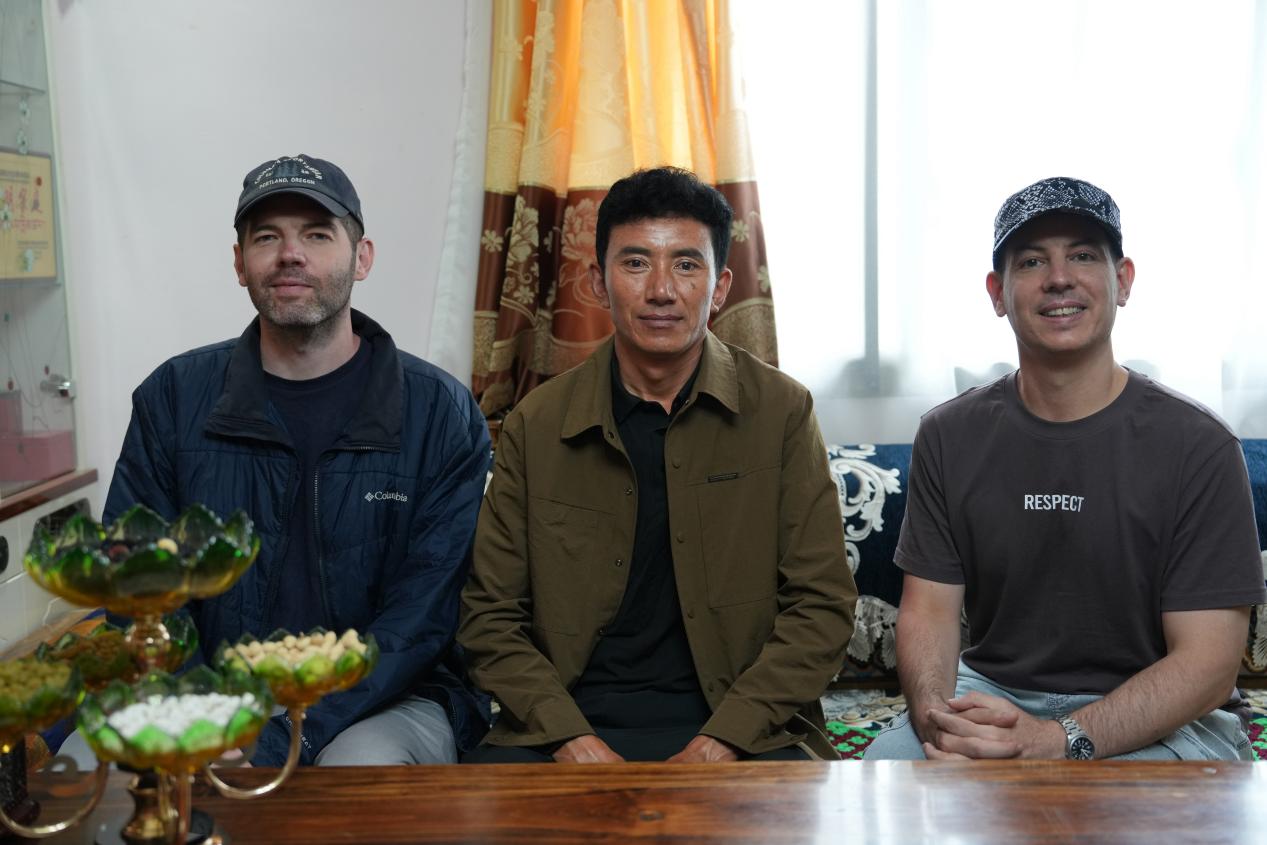
CIIC employee Justin Davis (left), local Communist Party branch member Dawa Jiancan (center), and Álvaro Paños (right) pose for a photo in Gala.
I enjoyed walking through a special exhibition hall dedicated to highlighting the efforts that have been made in Gala and learning more about the progress that has been occurring.
Gama Agriculture Company’s highland fruit helps boost incomes
Lastly, we visited the Gama Agriculture Company, which operates the largest fruit production base in Xizang, in addition to other endeavors. Various highland fruit, such as apples, peaches, grapes, and cherries, are grown at the site. We toured a polytunnel cherry orchard, discussed the modern undertakings that have been pursued and the rising incomes that the farmers that are involved have been enjoying in recent years, and tried some of the fruit.
I learned that a wealth of progress has been made in the area in recent years. Infrastructure has been improved, a high-quality agricultural demonstration park has been established, processing plants have been built, hotels and other leisure and hospitality facilities have been erected, high-quality seedling breeding bases have been created, homes and other buildings have renovated, industry chains have become more comprehensive, and the Gama apple and Gama cherry varieties have received certifications from the central government.
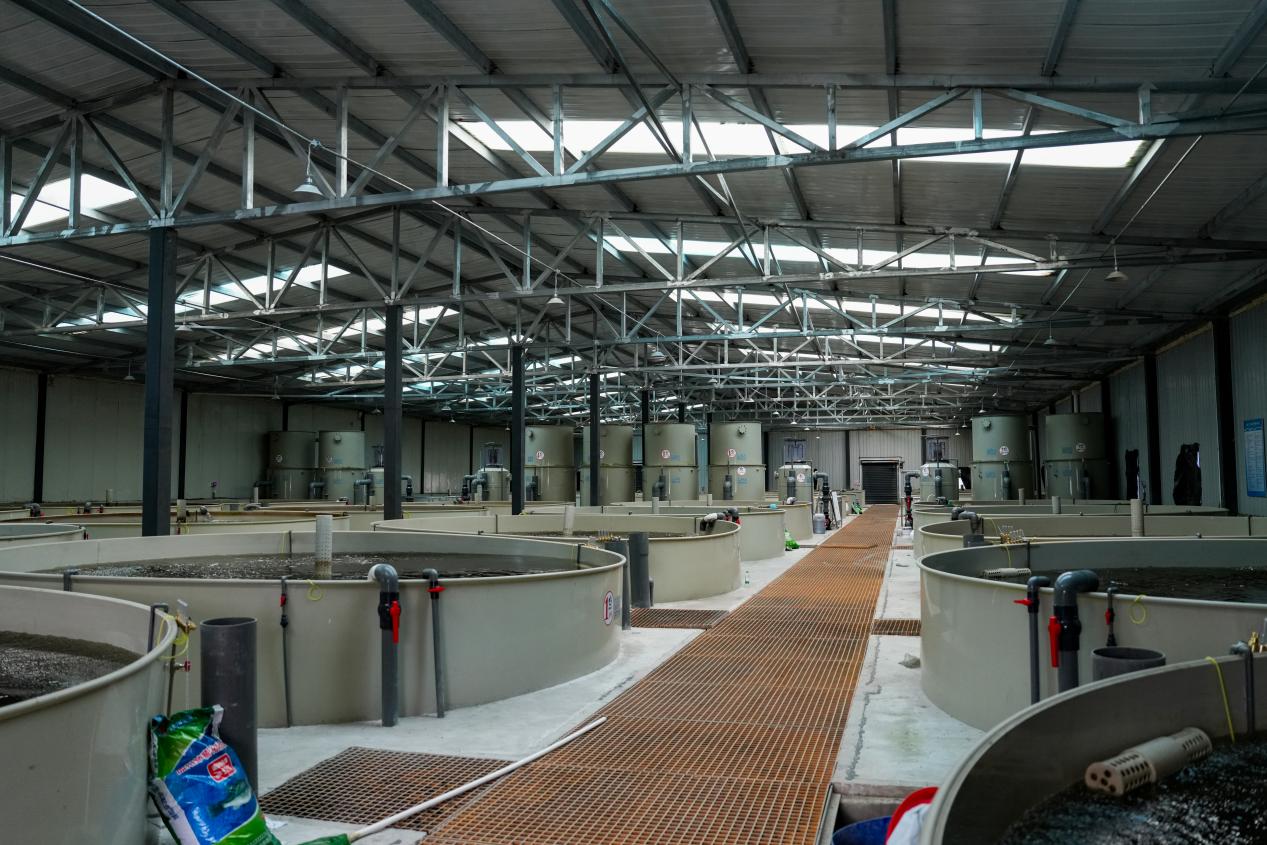
A view of a Gama Agriculture Company processing facility
A grape seedling breeding base and high-quality apple farming base have also been built, beautification and greening projects have been carried out in the area, a fruit and vegetable sales and marketing center has been established in central Nyingchi, an apple production base has been formed, a large-scale biogas project has been launched, campsites have been created, an agricultural training center has been built, Gama’s fruit and forestry industries and supporting facilities have been upgraded, a water supply project has been carried out, and a modern plateau fishery demonstration project has been launched.
More recently, aquaculture, corresponding research, and strawberry projects are being pursued, and two major production bases are being built, and grafting projects and other forms of precision apple and cherry management are being strengthened. I love fish and fruit and thought that these were interesting endeavors.
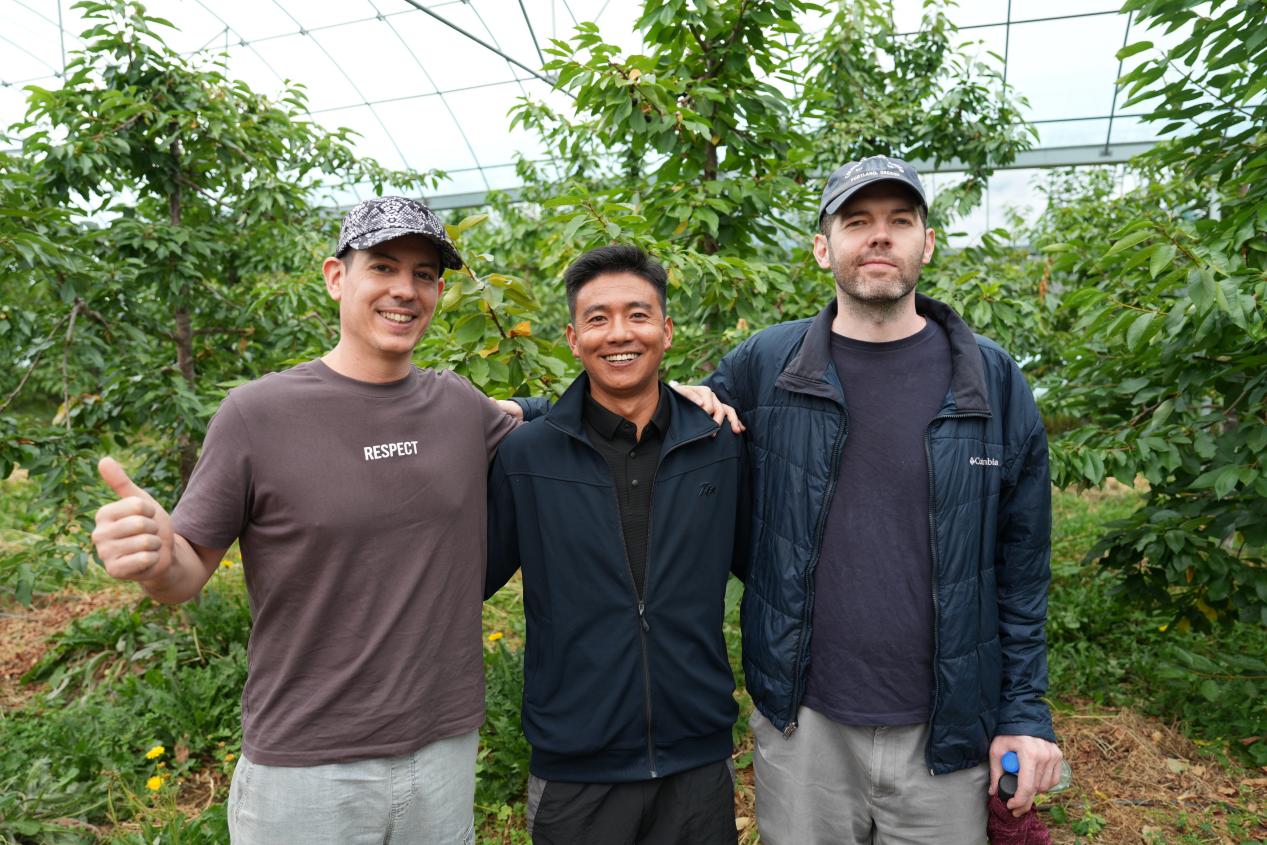
Álvaro Paños, Gama Agriculture production manager Gesang Qunpei, and Justin Davis pose for a photo in a polytunnel cherry orchard operated by Gama.
A high-altitude aquaculture demonstration base with over 1.5 million fish has also received unanimous recognition from consumers. Aquaculture standards have been formulated, several relevant patents have successfully been obtained, and several more are pending, which promotes the healthy development of the high-altitude fishery industry.
I had the idea of making cherry kombucha using fruit from the farm and discussed it a little with production manager Gesang Qunpei. Healthy, sour, and carbonated, kombucha is a fermented tea beverage that likely originated in east China’s Bohai Sea region around 2,000 years ago. I have been making it and other fermented food and drinks for many years and thought that cherry kombucha with Tibetan sourcing would be delicious and unique. The cherries produced in the region are not in season at the moment, but such an undertaking could be an interesting project in the future.
Unforgettable experiences
A dynamic region full of traditional culture, stunning geography, and steady development, Xizang has been making great strides forward while maintaining its strong identity. The region is well worth visiting for anyone who is interested in this one-of-a-kind land. From drinking butter tea and yak milk, to eating fresh, locally produced meat and produce, to hiking in the mountains, to appreciating the welcoming nature of locals, to visiting temples and museums as well as lakes and glaciers, there are plenty of marvels to be seen and enjoyable experiences to be had, all while enjoying smoothly functioning airports, 5G internet, extensive road networks, and other modern conveniences. It will be interesting to see what awaits if I am able to go to Xizang again in the future. Every visit is distinct and full of unforgettable memories.